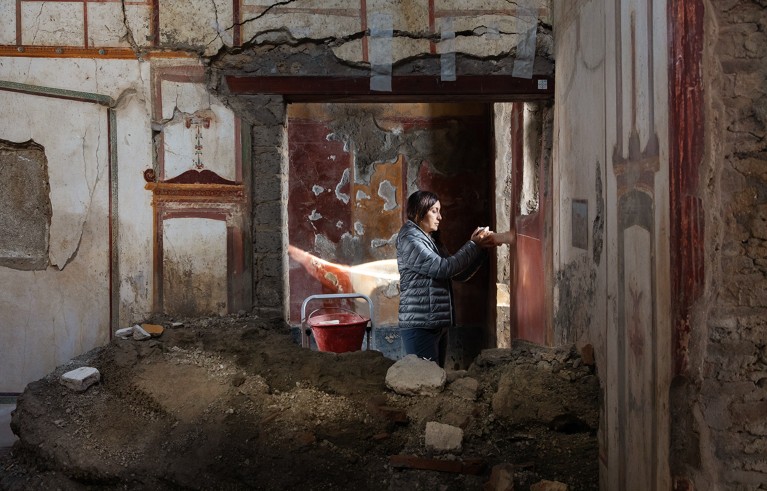As principal investigator of the Centre for Cultural Heritage Technology in Genoa, Italy, I promote the development of new technologies to preserve and protect important archaeological findings. Right now, I am in the field in the ancient Roman city of Pompeii, where I am working with a robot to reconstruct Pompeii’s shattered frescoes. These are a type of mural painting on wet plaster. The project is called RePAIR.
Pompeii contains thousands of fresco fragments, and it is close to impossible for a human to reconstruct all the irregular shards into big, meaningful paintings. Technology now allows us to reassemble them from myriad pieces: the robot we use is equipped with two soft humanoid arms, high-definition scanners, cameras and 3D digital-recognition software.
In this picture from January, I am in the House of the Painters at Work, part of a complex of buildings called the House of the Chaste Lovers. Both structures remained hidden from the world for about 1,800 years after the ad 79 eruption. I am holding a colorimeter, a device that helps me to determine and specify the original colours in the frescoes.
In RePAIR, I’m in charge of studying the hyperspectral images of the fresco fragments in storage and comparing them with the paintings on the walls of the House of the Painters at Work. By comparing the spectral similarities, we will be able to work out whether the scattered pieces collapsed from the same wall.
I have a PhD in geomatics, and I initially studied history and archaeology. Archaeology helps us to understand where we come from, and technology enriches that chase. I’m glad I’m a translator of two worlds. My mind runs wild when I think about the fascinating titbits of Roman life that we are still missing because Pompeii’s frescoes were smashed up.


 Tweezers, water, mulberry paper: my toolkit for repairing ancient Japanese art
Tweezers, water, mulberry paper: my toolkit for repairing ancient Japanese art
 Timbre in the timber: how I date ancient violins
Timbre in the timber: how I date ancient violins
 Restoring Notre Dame’s ‘magical’ windows
Restoring Notre Dame’s ‘magical’ windows








